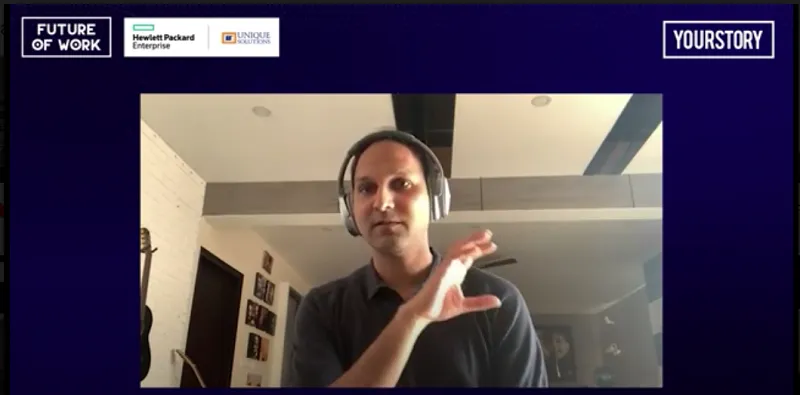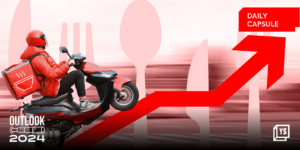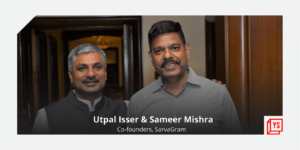“Sometimes, we have to stop and take a deep breath, as there are thousands of ideas that we want to take to the market. Opportunity to scale is so large. So, how do we prioritise?” questioned Anuj Rathi, VP Product, Revenue and Growth, Swiggy, on day 2 of YourStory’s Future of Work 2021 summit. “That’s the key question in front of product managers today,” he added.
In a chat with Priya Seth, Senior Anchor, YourStory Media, Anuj touched upon many key ideas that product managers could adopt to create successful and sustainable products.
“How do we find the right products to take to the market to make sure that we maximise the chances of them getting the elusive product-market fit, and retire them when they don’t work. That process in itself is very rewarding,” he said.
Reminiscing about Swiggy’s early days six years ago, he said at that time they had been off to the race with the hockey stick growth. “And the hockey stick growth comes when you have achieved the product market fit and when your demand out-steps the supply.”
In his conversation, he mentioned many behind the curtain strategies that Swiggy follows when it comes to design thinking, experimenting with new products, driving innovation and more.

Here are some key takeaways:
Get the core product right
First step before thinking about innovation is to get the core product right. Unless your core journeys are not right, there is no point thinking about more products, especially if you are a very high-frequency product.
“We made sure that we are investing a lot in making the core experience extremely delightful and frictionless for the consumer,” he said.
Think of ‘more journeys’
“Thinking beyond core journeys is ‘more journeys’. So now that you have the frequency of consumers coming to you all the time, what are the other ways in which you can delight them? You can also think about entirely different angles which anyone may not have thought about. Those are what we call ‘more journeys’. That’s where a lot of 0 to 1 product-market fit kicks in,” he said.
Think about metaloops
Anuj says metaloops are things for which people will naturally come to you. The additional things on top of the existing product, which create an essential stickiness to the platform beyond the functional needs of the user.
“Between these three areas – core journey, more journeys and metaloops – we think about in-depth and specific ways, and the art of creating the product market fit is very different,” said Anuj.
Solve for a deeper consumer need
A product is only useful when it is looked at in the context of a market. What user needs are you solving? If you can identify that and you can validate that once your product goes out into the market, then build on top of that, create your ideas, execute those ideas, Anup said.
Remain agile with execution
Before the pandemic, product managers mainly focused on empathy and past data. With the pandemic, on the one hand, people’s behaviors changed all together, not reflecting whether it’s a permanent or temporary change. On the other hand, all the past data analysis became insignificant in the current context.
“You are left with only the third way – intuition – which is difficult to build. That’s why it’s important to not only stay glued to the market but stay extremely agile with the execution,” he said.
Try to launch innovative yet reliable products
Once the pandemic hit, everything changed in a snap. The entire operational mechanism came back to the drawing board. But as Anuj said, they saw this as an opportunity.
“Because of the brand that we have built, it was also an opportunity for Swiggy to act on what consumers really need today. We just followed the user, we just tried to understand what is it that the user will keep needing. So in those months, we launched not only innovative but really reliable products,” he said.

Align your product design principles with the user
As Anuj shares one of the philosophies at Swiggy, he explained that when a user turns to Swiggy, he is already hungry. If he doesn’t get the right food on time, he will get angry. “It’s the deadliest combination of customers called, ‘hangry’ customers,” he joked.
The reason he got to this stage is because either the user took more time to search for what he wants, or Swiggy as a platform took too much time delivering food.
“While on the delivery side we always try to shave off minutes, even on the discovery side, we have to make sure that you are doing it as fast as possible. So our product design principles are aligned to get the user to get to their food faster and to have less hangry consumers and more delightful consumers,” he chuckles.
Strive to maximise the wins for each stakeholder
According to Anuj, innovation will truly be sustainable when it is a ‘win win win win’.
“We literally chant it like this. It has to be a win for the consumer, restaurant, delivery partner, and for Swiggy. There are some cases where we may not be able to find all the 4 wins but we strive to maximise those wins for maximum number of stakeholders,” he said.
Anuj further advised on building the core product based on these five key pillars
- Start with the consumer: Define the exact consumer and not the segment or so on. Test the prototype.
- Design thinking is a must: If you are starting with a consumer, seek validation from the consumer, and it’s always better to understand what the users will do if you take that product to the market.
- Always go first for excellence: While a lot of people will say to go for speed, do not drop the excellence part of it. Strive for excellence, and keep on innovating.
- Be agile: You may actually have a product that works for a certain section of users. But think about adding a few things that can be more valuable to other sets of users too.
- Think data: Combine data and insights together to guide your way forward, rather than because it came from somebody’s hunch.
Loosen up! Mistakes will happen
While concluding the session, Anuj highlighted that mistakes will happen but one should avoid what is avoidable.
“To sum it up, product managers should always keep users at the center of their universe, and once a product is built and validated, observe how users are using the product. Else, a lot of pits and potholes can be expected,” concluded Anuj.
A big shout out to our Future of Work 2021 Co-presenting Sponsors Hewlett Packard Enterprise and Unique Solutions; Digital Excellence Partner, Google Cloud; Associate Sponsor HP and Intel; and Sponsors: Atlassian, Freight Tiger, Archon I Cohesity, TeamViewer, and Pocket Aces



![Read more about the article [Funding alert] Flipkart raises $3.6B at $37.6B valuation from SoftBank, Tiger Global, Walmart, others](https://blog.digitalsevaa.com/wp-content/uploads/2021/05/Flipkart-1582211499554-300x150.jpg)






